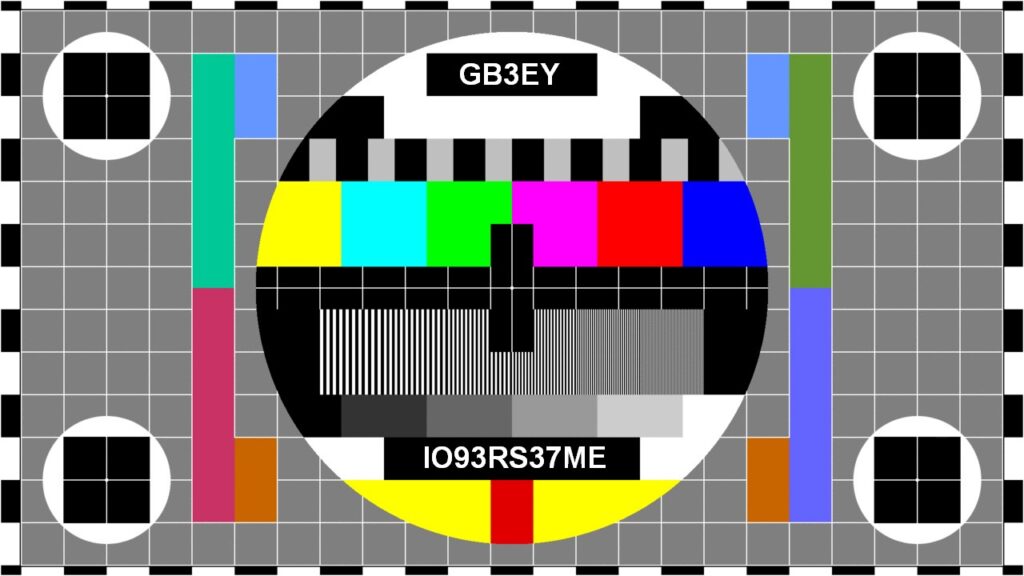
Quick details
| Location | Cave Wold Radio Station, Riplingham, E. Yorkshire |
| Locator | IO93RS37 |
| Output frequency | 1308MHz |
| Output mode | DVB-S2, H.264 encoding. FEC 3/4 |
| Input frequency | 1275MHz |
| Input modes | DVB-S/S2, 250, 333 or 500kS/s, any FEC |
| Antenna | Alford Slot @ 25m AGL, site 155m ASL |
| Stream output | http://batc.org.uk/live/gb3ey |
| Stream Input | Send first page of Ofcom licence to: clive(@)hesh.co.uk [remove brackets] |
| Status | On-air 1400 – 2300 local |
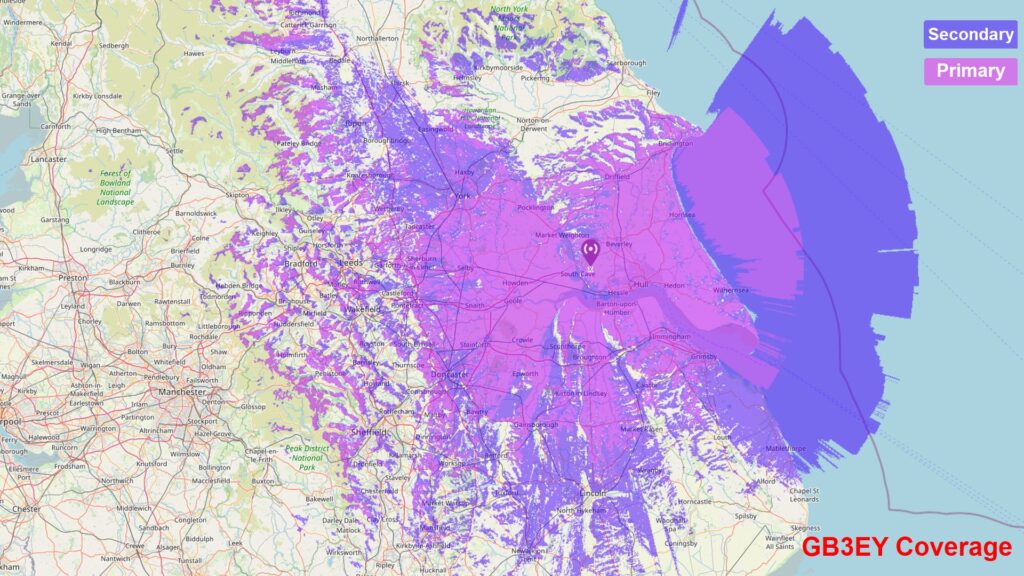
Technical Details
A bit of history…
The origins of the television repeater GB3EY in East Yorkshire go back to 1993 when a 23cm television beacon was set up to test coverage from a farm on a 15m cliff overlooking the North Sea, south of Hornsea in East Yorkshire. This rough and ready beacon was housed in a discarded kitchen cabinet and covered with a tarpaulin. It ran under the farmer’s callsign, G0NAA, and gave an indication of the coverage that could be expected from a 23m tower to Hull, some 22km away, which was not as good as expected. However, an application was made for a repeater NoV which came through in 1994 surprisingly quickly. A basic repeater was put in the same housing to get it on-air using logic built by Andy G4HJD.
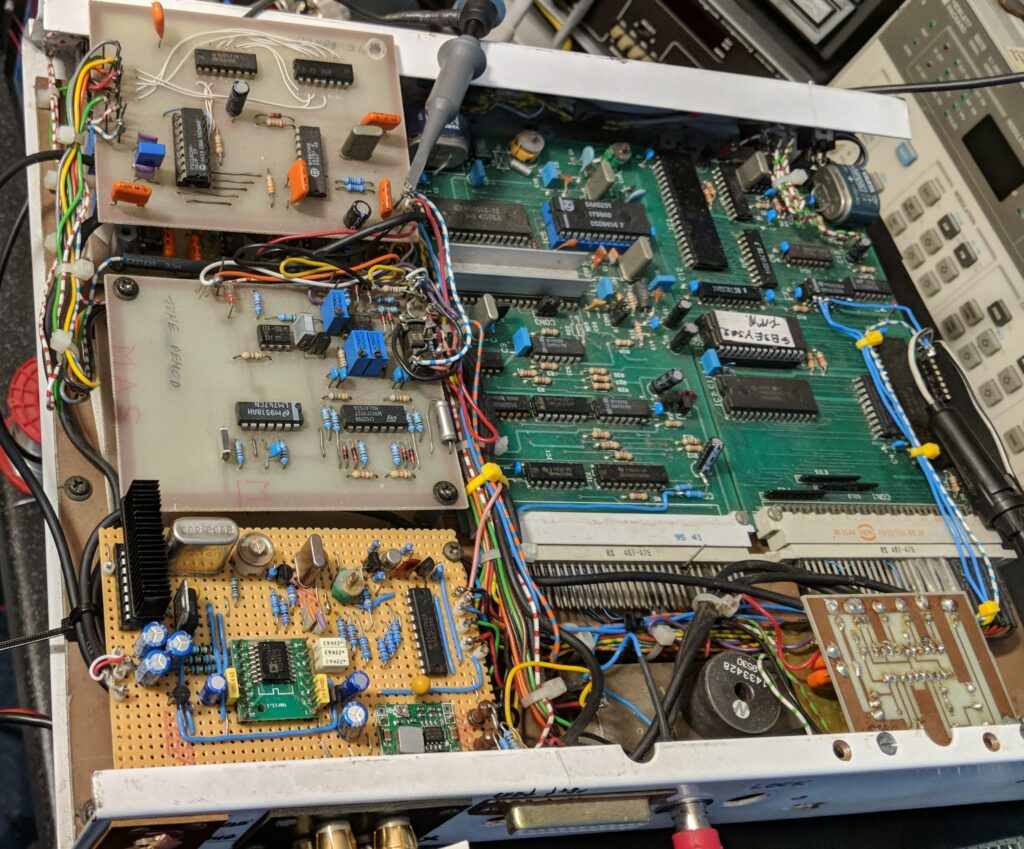
Later, a better cabinet was installed which was needed to accommodate the Rx filter, constructed by G3JVL. His filter appears to be an evanescent waveguide design, unusual for 23cm because the large size of the rectangular cross-section at 130mm x 180mm . The PA used in the beacon was rebuilt and later the original Solent driver was replaced to improve quality, reliability and isolation. The logic was replaced by one built by Bill G3RMX, based on Trevor G8CJS’s Teletron project using the first Philips Teletext chipset and a Z80 CPU. See the screenshot below.

The receiver was a Pace set-top box with a Kuhne pre-amp. Antennas were always a problem because of the proximity of the North Sea; a Tonna 23cm Yagi lasted just six months before the boom had rotted so much that a finger could be pushed through the side! A lot of effort was put into combatting the radar interference, such as remotely switched sector Yagi antennas for receive and pulse swallowing circuits in the video path, with limited success. The repeater was usable for well equipped stations that could get a strong signal into the repeater but for anyone else the coverage was disappointing and the pictures were always peppered with radar pulses.
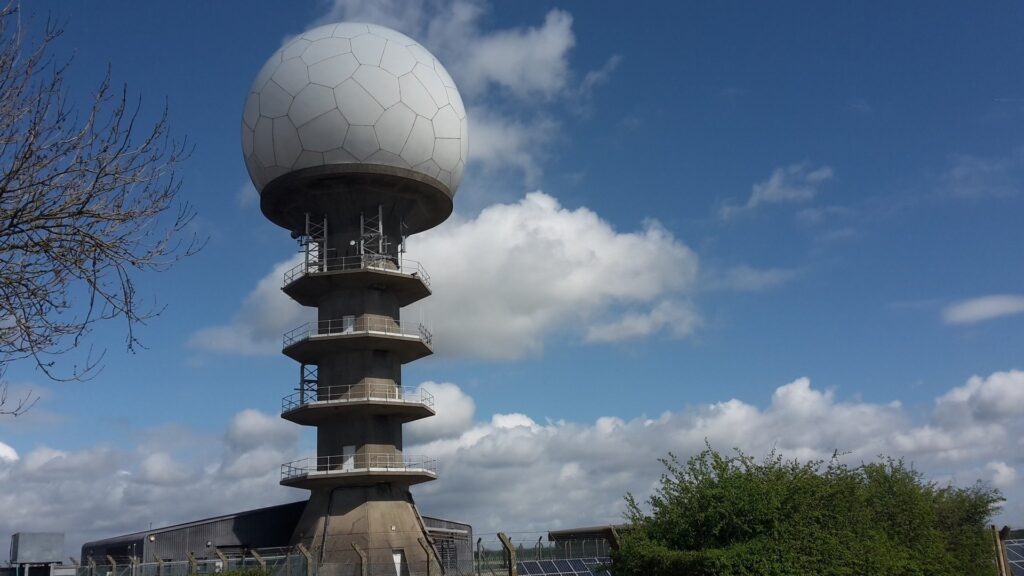
Approaches to the forerunner of the RSGB’s ETCC about moving the repeater to a better site in 1999 were rejected on the grounds that the CAA had been upset by some backdoor negotiations between one of their engineers and an ATV repeater group and consequently any change to EY’s NoV would likely result in no NoV at all. The status quo continued until the Claxby Radar changed its lower frequency around 2005 so that it was just 6MHz away from the input frequency of 1248MHz. With the receiver being 27MHz wide, the standard for domestic FM satellite receivers, the repeater’s receiver was swamped and even strong stations could not get a usable relay of their signals. The repeater was effectively rendered useless.
A new start
In the intervening years further attempts were made to relocate EY as an FMATV repeater, but all were unsuccessful. In April 2014, Richard G4YTV and Clive G3GJA decided to try to break the stalemate. The East Yorkshire Repeater Group had been using its Cave Wold Radio Station site since 2000 and it was an ideal site for EY, especially as being on top of the Yorkshire Wolds it could link stations all over Yorkshire and had power, a tower and a secure hut to house the repeater.
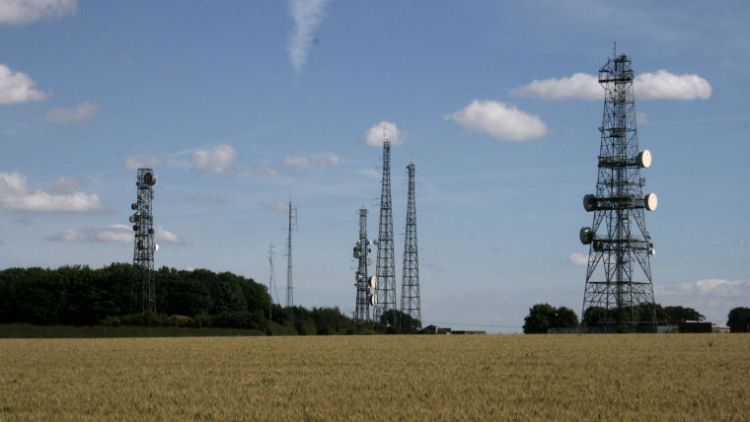
A new application, on the advice of Noel G8GTZ, was submitted for a digital repeater at Cave Wold, being the best chance of getting a new NoV. However, nothing happened for 4 years due to no response from the CAA, so in 2018 Richard and Clive started to push a bit harder. Eventually, this led to a change of policy by Ofcom, whereby if they didn’t get an answer from the primary user within a reasonable time, they deemed that the primary user had no objections. GB3EY’s digital NoV arrived somewhat unexpectedly in August 2018, after all we had been waiting for only 18 years!
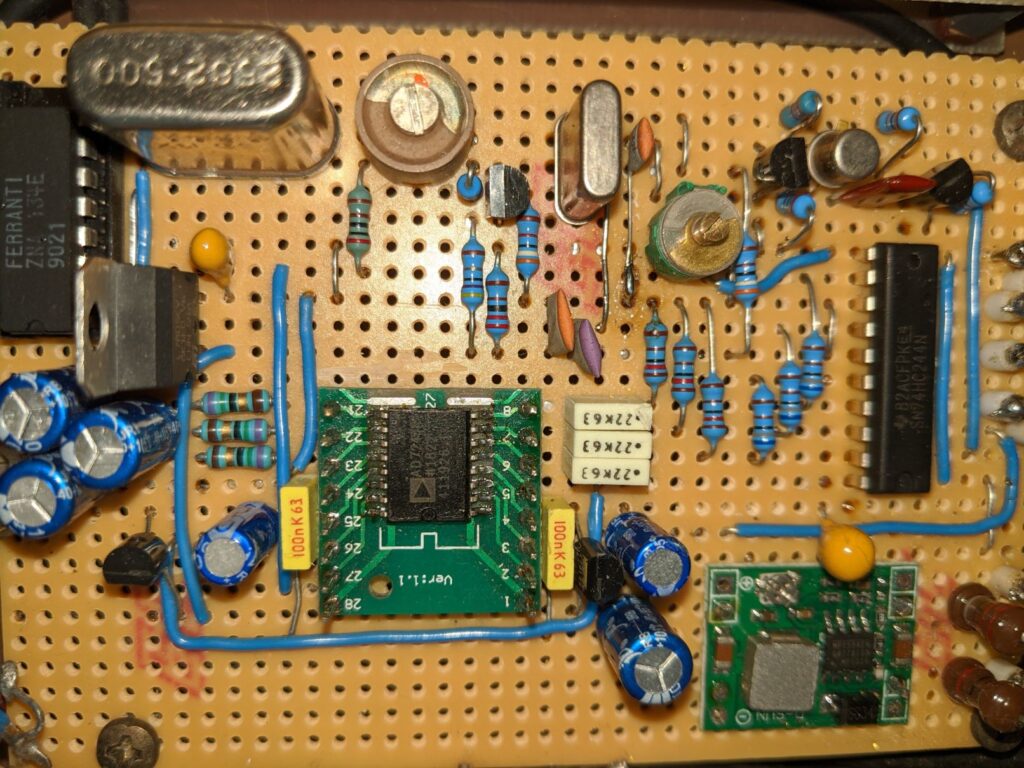
A digital ATV beacon was cobbled together quickly using a BATC DTX1 encode/modulator, an old Mitsubishi brick power amplifier and a Raspberry Pi video source on a sheet of plywood to see how well the Cave Wold site would perform. We weren’t disappointed. Within a couple of weeks portable stations were reporting seeing it at distances of 90km. During the beacon operation, work commenced on making a full repeater based around the analogue logic and the DTX1 used in the beacon. A rebuild of the PAL modulator in the logic was needed as the DTX1 only works with interlaced syncs, which the Maplin TEA2000 encoder and the Teletext 2nd generation chipset did not support without genlock. A ZNA134 sync generator linked to an AD724 PAL encoder was teamed up with a SAA5231 chip fitted to the Teletron boards to provide genlocked syncs for the rest of the Teletext chipset.
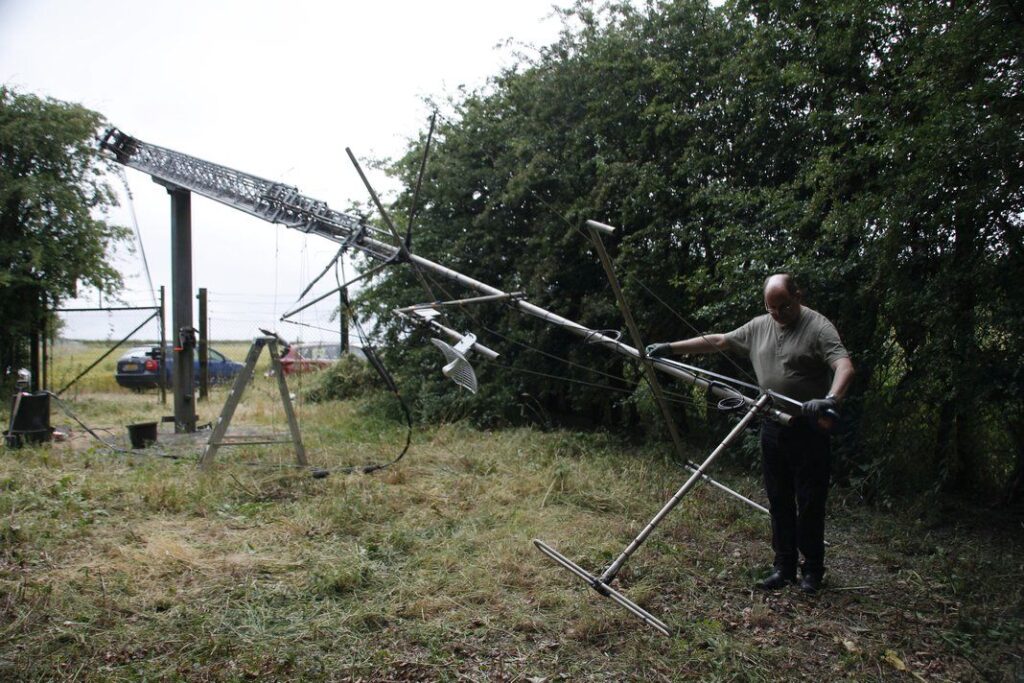
In October 2020 the repeater went into full service and although it was digital RF in and out, internally it was using PAL coded analogue video because the logic from the analogue FM repeater was being used with a DTX1 encoder/modulator, both needing baseband inputs. That restricted the resolution to 720 x 576, although it was probably worse. That said, the picture quality was far better than anything that had been achieved with FM as can be seen by the screenshot below. No comparison with the 2009 image!
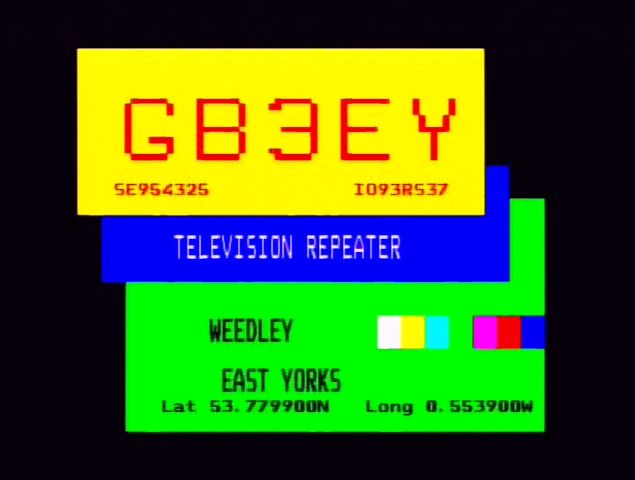
The repeater uses a single Alford Slot at 25m, fed with 33m of Andrew LDF5-50A Heliax. The 90W PA, with a circulator built in and a driver comprising of a Mitsubishi MOSFET brick and a MMIC pre-driver were supplied by Bert PE1RKI and are run at about 15W RMS out. The circulator makes sure that the PA output sees 50 ohms resistive which improves the linearity of the PA and also protects it should the filters become mistuned or the antenna develop a fault. The 38dB gain of the driver/pre-driver allows the Pluto’s output to be connected directly without any additional amplification.
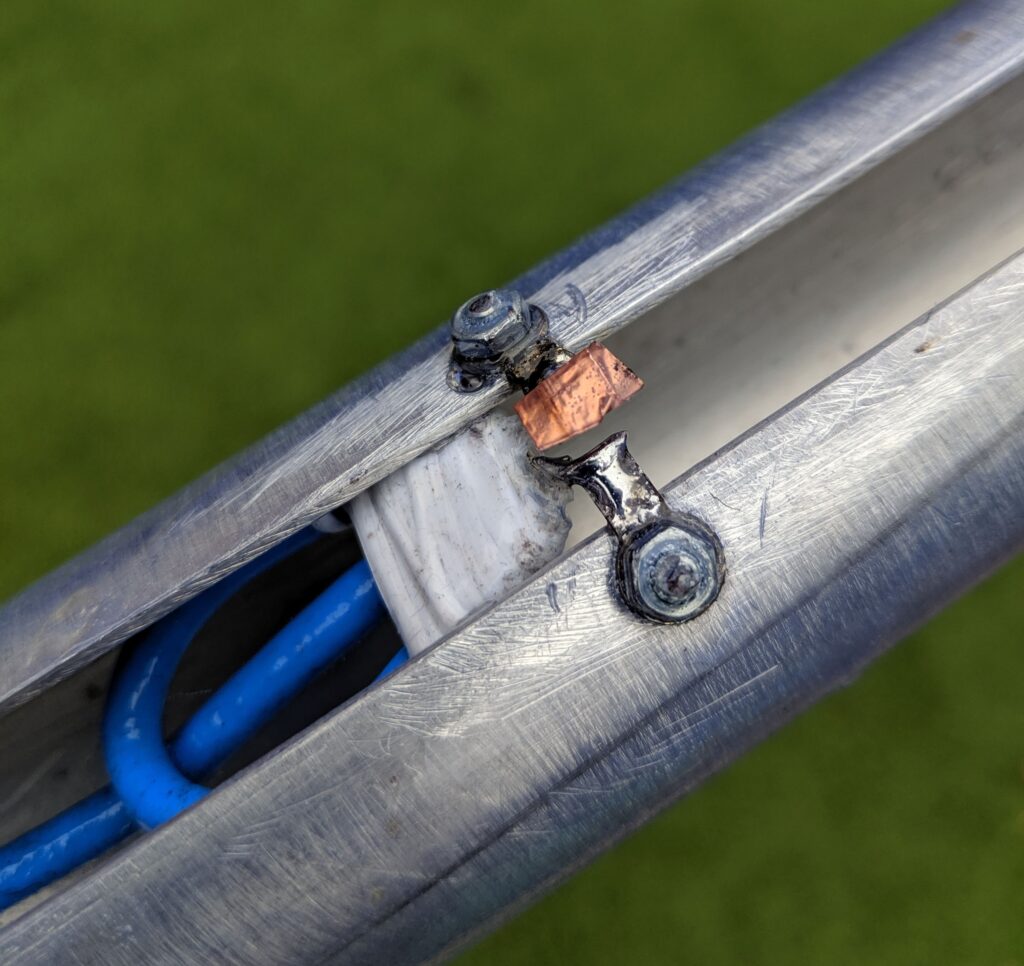
The duplex filter and two bandpass filters were supplied by ID-Elektonik Gmbh. The Rx filter has a notch to reduce the radar to a manageable level; it’s essential as the radar puts in a -10dBm signal to the antenna socket. For the best isolation between Tx and Rx it was found necessary to modify the duplexer and filters so that signals were unable to enter the ends of the filters that had been left open. A copper plate, carefully filed to give a friction fit, was hammered into the ends of the extrusion and the filter realigned. A less compact layout might not need the modification.
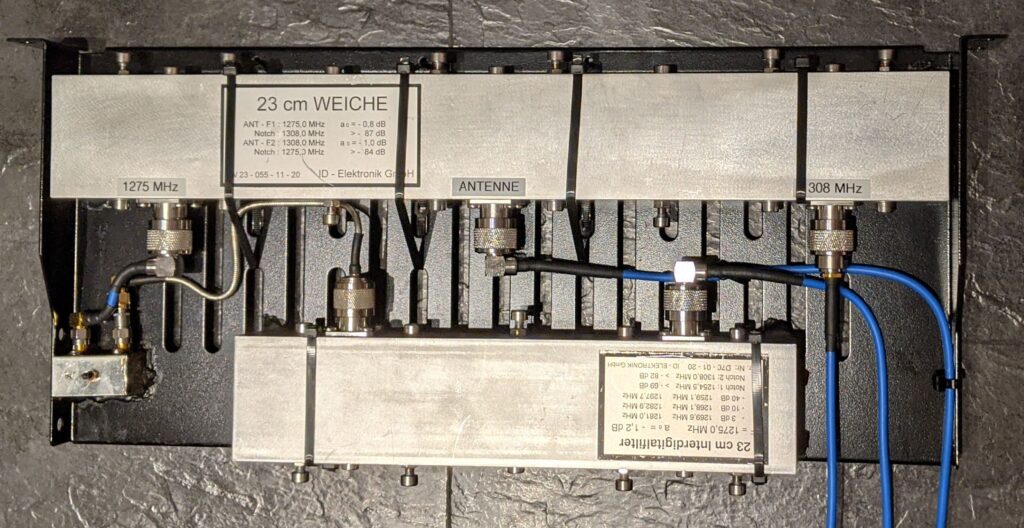
A Kuhne 132A 23cm pre-amp feeds a BATC Ryde on the receive side. The RF parts and power supplies are housed in a 6U 19” wide Vero cabinet, but the old logic had to be outboard due to the lack of space.
Digital upgrade
In 2021, Clive started to look at making EY digital from end to end. The goals were to achieve full HD output on the RF output and the BATC Streamer with the complete repeater housed within one cabinet. The existing receiver was not a worry as it was known that the Ryde could easily be converted from CCVBS output to HDMI full HD. Many HDMI to H264 encoders were experimented with including the H264/H265 one readily available on auction sites. None of the encoder and SDR combinations were stable enough for repeater use until Clive stumbled on the combination of an ADALM Pluto with F5EOE’s 0303 firmware and a Link Pi ENC1 v2 encoder. On test that would run for 48 hours before falling over, long enough, as the repeater is switched off overnight to save power!
Around the time Clive had got the Tx side sorted, the BATC Repeater Controller software was released, so he decided to use it in EY. It was developed for use in GB3HV by Dave G8GKQ to a specification devised by Noel G8GTZ and has proved ideal for use in GB3EY. Noel suggested Portta HDMI switches to manage the signal paths, controlled via Infra Red LEDs driven from the Controller Raspberry Pi’s GPIO.
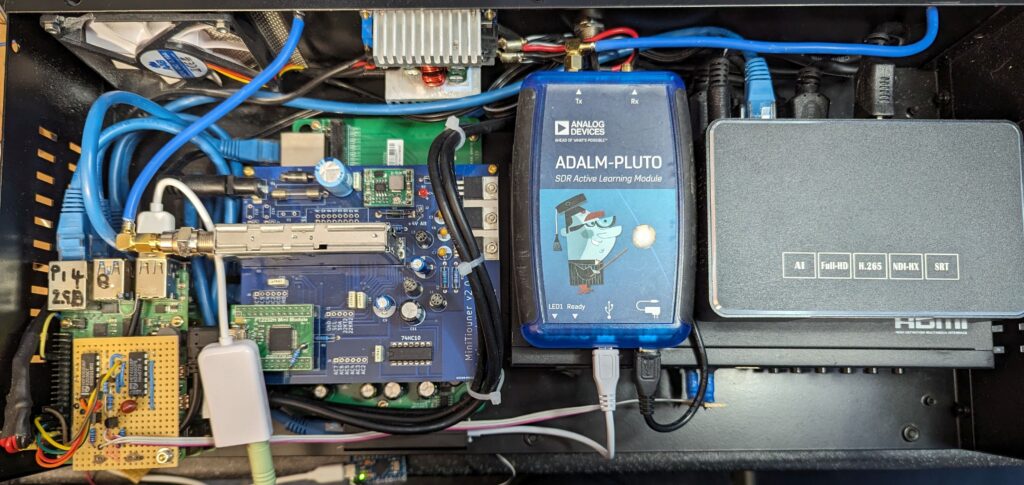
It was all lashed up on the same sheet of plywood used for the beacon and tested. Having proved it worked as intended, Clive set about building it into the available space in the repeater’s cabinet. Only 2U was left in the cabinet, so a fully enclosed 200mm deep rack case was purchased and he set about squeezing it all in. It’s not easy to see what the case contains from the photo as it is so packed, but in there is:
- ADALM Pluto, powered via the secondary power socket
- Anker 1Gps Ethernet to USB adapter plugged into the Pluto’s OTG socket
- 8 port Ethernet switch
- Link Pi ENC v2 HDMI input streaming encoder with two outputs; one for the BATC streamer and the other for the Tx at 1080p 25fps.
- Two Portta seamless HDMI 4 input switches; the second one is used a frame buffer only which removes nearly all the glitches.
- 3 x Raspberry Pi 4s. Used for Controller, Ryde 23 Rx and Ryde Stream Rx.
- BATC Minitiouner v2 for Ryde 23cm Rx.
- 12v to 5v 20A switched mode PSU for the Raspberry Pis.
- Miniature 144.75MHz FM receiver (DRV818) for remote DTMF control of repeater functions.
- White USB Audio dongle
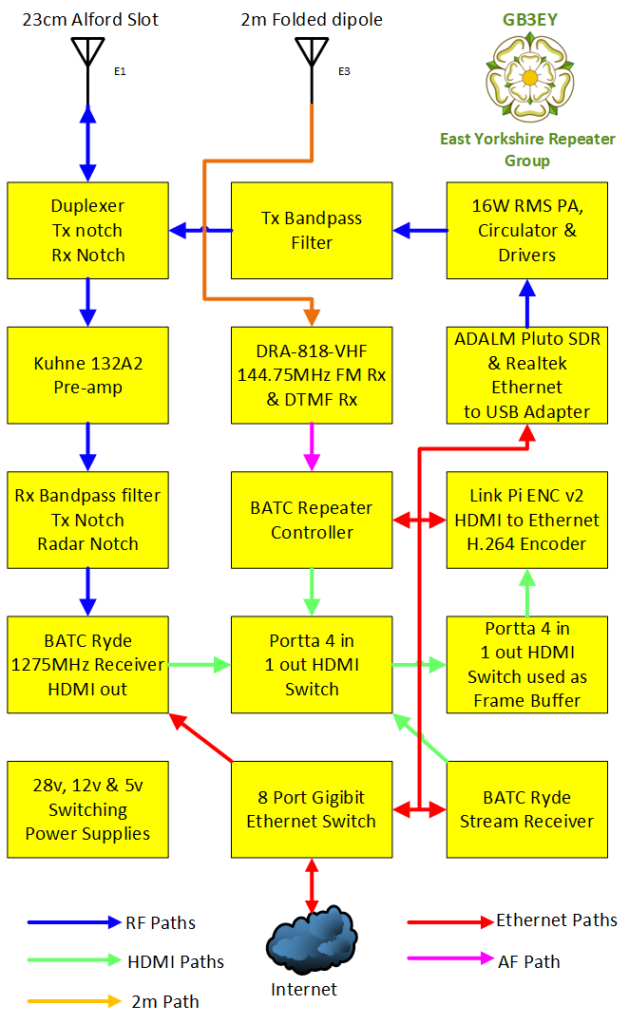
Every device that has an Ethernet socket is linked to the Ethernet switch so it is possible to maintain those devices via web interfaces or an SSH console remotely via the 10km WLAN link to the repeater site. The DTMF control allows users to modify the behaviour of the repeater’s inputs and its 2m receiver audio is also relayed on the repeater’s audio when idle and not relaying TV. The block diagram shows the interlinking and the signal paths.
The all digital GB3EY in use
The new digital GB3EY commenced operation on the 24th January 2024 and was the first TV repeater on-air using the BATC Repeater Controller. Initially, the third Raspberry Pi was used as an on-demand video player for testing receivers, but it was little used, so it was converted to a Ryde Stream Receiver in August 2024. A change of SD card and a piece of wire to link two GPIO pins was all that was required to do this.
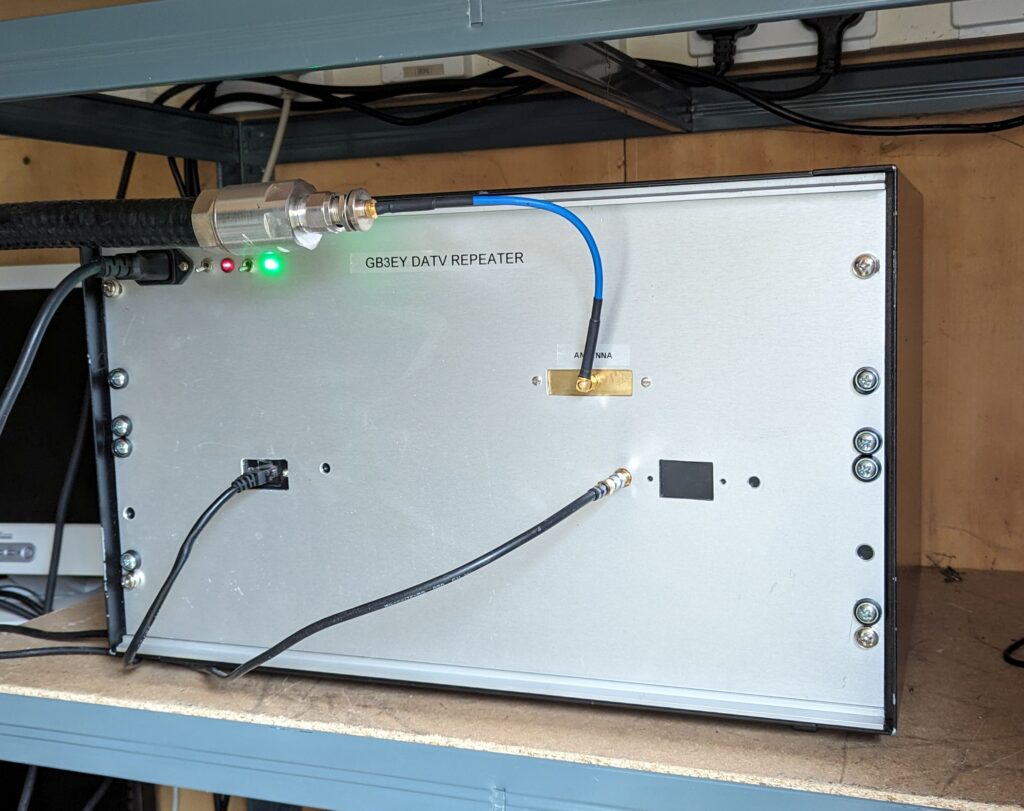
The stream input has been very popular. Best ‘DX’ so far is Nevada and it offers a fallback if for some reason the RF path fails. That has happened more often than expected. It has been a revelation to find just how much 23cm propagation varies due to weather over relatively short distances, sometimes causing, what would normally be a usable signal, to fail to lock up. Having the stream input gives an alternative that is almost guaranteed to work. Smart phones can send TV through the repeater via the steam input with no other equipment required and that has been useful for outdoor operation and ‘wireless’ shack tours.
Was it worth it?
The upgrade to an all-digital path was not easy, having consumed a lot of time and costing over £900, but the results have been more than worthwhile. There is just no comparison between the 720 x 576 analogue signal path and the 1080p digital system in picture quality. The buzz on the sound has gone as have the wavy lines on the video probably caused by crosstalk in the old logic or ground loops. Updating the news slides is now done by uploading a JPEG image whereas updating the Teletext system was a nightmare; controlled by a 300 baud modem on the audio channel, a keypress took several seconds for the result to be seen on-screen making edits almost impossible.
The East Yorkshire Repeater Group is indebted to the BATC Bursary Fund, that made the upgrade financially viable by way of a generous contribution, and the following people who have given their time, made donations and donated equipment:
Richard G4YTV, Clive G3GJA, Ken G8VDP, Bob G7AVU, Graham M1ASR, Dave G8GKQ, Noel G8GTZ, Paul M0DPH, Lyndon M0LDR, Graham G8VAT, Richard G0GLZ, Andy G0VRM, Tony G4SJI and HESH Computer Services Ltd.
